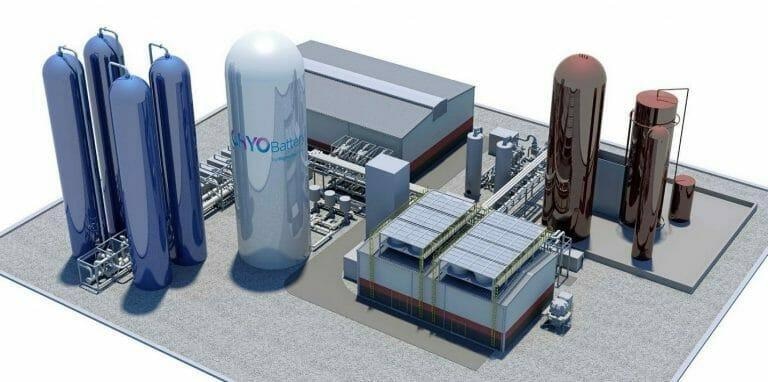An innovative new energy storage technology that uses hot sand is being developed as an alternative in the field of renewable energy technologies. That feeling of hot sand on the soles of your feet is what sparked an investigation around the ability of sand to absorb and retain heat, giving rise to new thermal energy storage processes.1
 How sand is now a treasured tool for saving energy. Image Credit: Khatib, H
How sand is now a treasured tool for saving energy. Image Credit: Khatib, H
Finding ways to store excess energy produced by renewable technology is one of the main challenges researchers are trying to overcome. Teams at National Renewable Energy Laboratory (NREL) and an Italian firm, Magaldi Group, recently unveiled new systems to help tackle this precise issue.
Enduring the Heat
The NREL researchers have dubbed their system, ENDURING; a systemic process used for superheating silica sand by taking the excess heat of existing wind and solar power technologies. The silica sand is subjected to extreme temperatures to generate steam for the production of electricity.
ENDURING is the shorthand term for “Economic Long-Duration Electricity Storage by Using Low-Cost Thermal Energy Storage and High Efficiency Power Cycle.”2 The system was developed to address the aforementioned issue with renewable technology; finding an appropriate way to store excess energy when production exceeds the demand.
ENDURING has the capacity to store energy in a similar way to how a battery does and could be a revolutionary moment in the renewable energy industry. The silica sand is superheated reaching temperatures above 1200 degrees C. It is then fed through the ENDURING system and transferred into a concrete silo which is insulated for long-term storage.
When the stored energy needs to be released, the sand passes through a heat exchanger which powers turbomachinery with pressurized gas; this, in turn, spins power generators which can then produce new electricity.
One of the most attractive features of the ENDURING system is its ability to be installed as part of the grid network. Furthermore, this system could help phase out traditional coal and natural gas plants and could even be placed on existing infrastructure on decommissioned sites respectively.
NREL believes that a single baseline, ENDURING system can store up to 26,000 MWh of thermal energy; equivalent to the annual energy consumption of more than 400 households.
Furthermore, the technology could be rolled out at costs ranging between 2 to 4 USD per kWh, making it a low-cost thermal energy storage solution.3
STEM
Over in Italy, the Magaldi Group is also heating sand as a viable thermal energy storage system that will consolidate solar energy excesses. Based in Salerno, the company developed its ‘Stem’ system (Solare Termodinamico Magaldi / Solar Thermo Electric Magaldi), which will be used both in Italy and other territories with a high concentration of solar radiation.
Using Heliostats – devices that contain one or more mirrors – sun rays are deflected into a steel container filled with sand. The sand in these cylindrical steel containers is exposed to temperatures around 600℃, which is then used to produce steam for generating electricity.
Compared to conventional solar panels, Stem can produce energy under high-temperature conditions as well as when there is little or no sun. Moreover, the system is considered to be extra eco-friendly as it utilizes materials that are environmentally compatible, and can be used at night-time for energy production.4
Alternative Thermal Energy Storage Solutions
Other systems are also being developed for alternative thermal energy storage solutions. Ohio-based Echogen has also developed its own Pumped Thermal Energy Storage (PTES) system which uses a combination of sand, water and carbon dioxide.
Echogen’s combi-system transfers heat from a cold reservoir loaded with ice/water to a warm reservoir that contains grains of sand using an electrically powered heat pump. The heat is then stored in the sand and, when required, fed into a heat engine to produce electricity as and when necessary.
Echogen believes PTES can deliver a 50-60 USD per 1MWh cost of storage for a 100MW system. By way of contrast, Highview Power, a leading long-duration energy storage competitor, currently offers a liquid-air system that runs at 100 USD per 1MWh for a 100MW facility.
While Highview is aiming to bring this to around 50 USD by 2030, Echogen’s calculations state that its PTES system will be 20-30% cheaper than Highview’s at 100MW/1GWh on an equivalent basis.2
With the onset of several innovative, thermal energy storage solutions in the renewable energy industry, affordable power may be on its way to help enhance grid resilience and promote the growth of alternative energy sources.
References and Further Reading
Hewitt, C., (2021) Does Sand Hold Heat? | Temperature Master. [online] Temperature Master. Available at: https://temperaturemaster.com/does-sand-hold-heat/
Khatib, H., (2021) How sand is now a treasured tool for saving energy. [online] AMEinfo.
Bellini, E., (2021) Storing wind, solar power with silica sands. [online] pv magazine International. Available at: https://www.pv-magazine.com/2021/09/01/storing-wind-solar-power-with-silica-sands/
Balestrieri, G., (2021) An Italian company is turning hot sand into clean energy. [online] Business Insider. Available at: https://www.businessinsider.com/italian-company-magaldi-group-sand-clean-energy-stem-thermo-electric-2017-4
Disclaimer: The views expressed here are those of the author expressed in their private capacity and do not necessarily represent the views of AZoM.com Limited T/A AZoNetwork the owner and operator of this website. This disclaimer forms part of the Terms and conditions of use of this website.